The Trudeau government has been weighing scientists' “emergency” warning about an endangered species for more than a year in a case that could have serious implications for the proposed Trans Mountain pipeline expansion.
The species in question, steelhead trout, is of great importance to Coldwater Indian Band, a First Nation in southern interior British Columbia that is directly affected by the proposed pipeline expansion.
Local salmon and steelhead populations are “integral to Coldwater’s way of life and have been for generations,” the First Nation has said in a formal submission to the federal pipeline regulator, the National Energy Board.
The Thompson River population of steelhead trout spawn in the Coldwater River, which runs through Coldwater’s reserve and traditional territory along the proposed path of the pipeline expansion.
“We don’t want to see the steelhead go extinct in our lifetime,” said Coldwater Chief Lee Spahan, in an interview with National Observer.
“I talk to my Dad and he told me stories about when he was young, there were so many steelhead in the river, you could walk across the river on their backs.”
But times have changed.
Spahan said that only 21 steelhead trout returned to the Coldwater River to spawn in 2017.
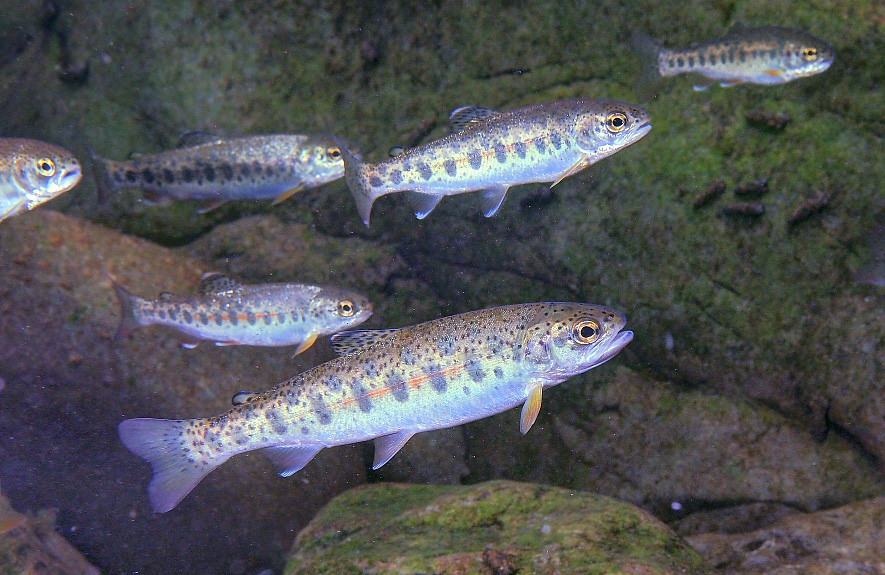
'Serious and imminent threat'
Coldwater Indian Band told the pipeline regulator that the remaining steelhead are vulnerable to a potential oil spill. Chief Spahan is also concerned about the impact of construction on the steelhead.
“It’s frustrating to know that [Trans Mountain] can put an application in and get a permit to run forward on proposed work and not have any paperwork or documentation to back up that their work is safe and that there are no fish at the time returning in these streams,” Spahan said.
If built, the Trans Mountain expansion would triple the capacity of an existing pipeline system along a modified route. Once completed, the expansion would allow oil companies to ship up to 890,000 barrels of heavy oil and other petroleum products from Alberta’s oilsands region to a terminal in Burnaby, B.C.
The industry has argued that the pipeline expansion is essential to allow oil companies to pursue growth by reaching new Pacific markets. Both industry and the federal and Alberta governments argue that the new pipeline is in the national interest and can be safely built.
Opponents, including many First Nations and municipalities along the proposed route, have argued the project is too risky and would push Canada’s climate change goals out of reach.
Under Canada’s federal species at risk legislation, an independent committee of government and non-government scientists assess the status of species, making recommendations to the federal cabinet about which ones need to be listed and protected by law.
This panel, the Committee on the Status of Endangered Wildlife in Canada (COSEWIC), conducted an emergency assessment of Thompson and Chilcotin River steelhead trout in January 2018, concluding that the species was in danger.
It subsequently sent federal Environment and Climate Change Minister Catherine McKenna its report the following month, recommending an emergency order to protect the trout by listing them as endangered under Canada’s Species at Risk Act (SARA). The letter noted the steelhead are facing an “unprecedented decline,” largely due to low survival rates in the warming ocean and unintentional killings by commercial salmon fisheries. Both factors pose a “serious and imminent threat to their survival,” wrote Eric Taylor, who, at the time, was the chair of the committee, in the Feb. 13, 2018 letter to McKenna.
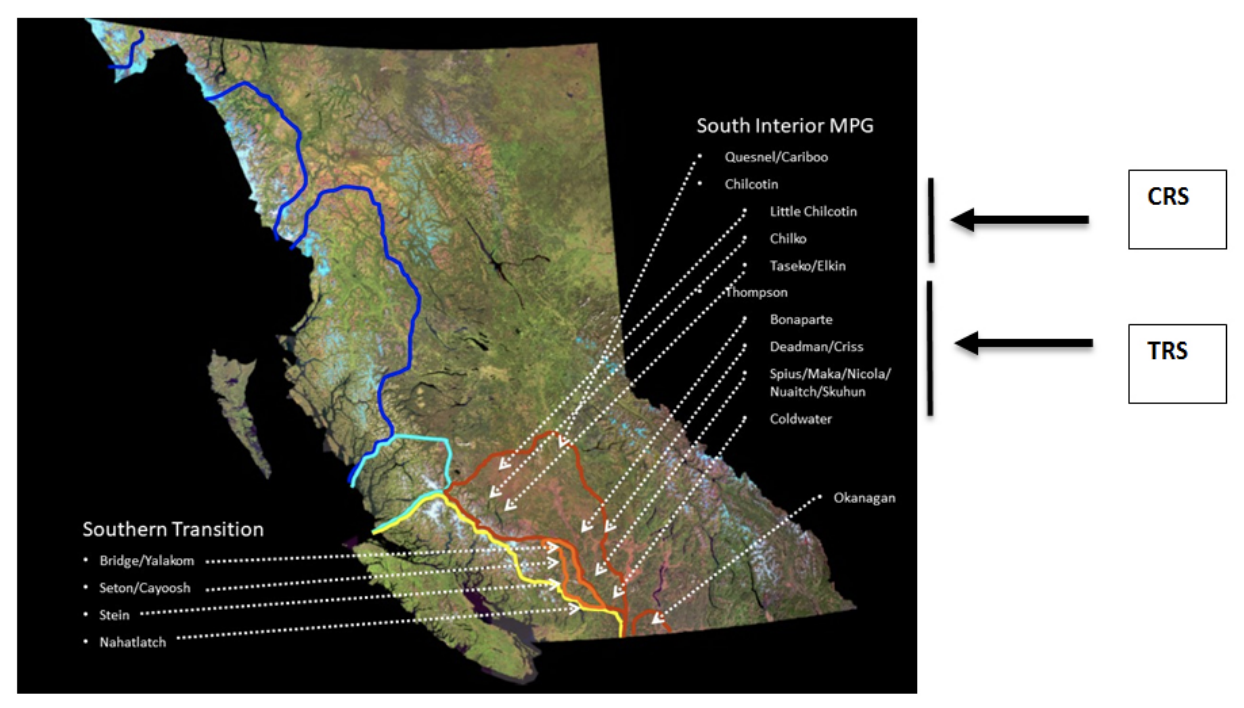
Emergency assessments by COSEWIC are rare
Taylor told National Observer in an interview that it's rare for a species to undergo an emergency assessment.
But the committee's report made it clear that the species was facing a significant threat. Both populations of steelhead trout have declined by about 80 per cent over the past two decades, the letter indicated, going from populations that numbered in the thousands in the mid-1980s, to dozens in the most recent assessment.
It isn’t clear why the government has taken more than a year to respond to the committee’s emergency warning.
Taylor and Margot Venton, a Vancouver-based lawyer and program director from environmental law firm, Ecojustice, both said that the federal government is frequently slow when it comes to responding to recommendations from the committee.
By law, the government is required to make a decision about whether or not to list a species or refer the matter back to the committee within nine months of receiving an assessment. The law also requires the minister to automatically accept the committee's recommendations within nine months if cabinet has not taken any action.
McKenna’s department referred questions from National Observer to the federal Fisheries and Oceans department (DFO).
The office of Fisheries Minister Jonathan Wilkinson said that conserving the steelhead populations was “an extremely high priority and will be a focus of decisions with respect to fisheries management plans for the year ahead.”
The government held public consultations on the issue between October and December 2018, but it has not yet made a decision about whether to list it under the species at risk law, said Wilkinson’s spokeswoman Jocelyn Lubczuk.
Wilkinson’s department has also told National Observer that it has a large volume of briefing material about its review of steelhead trout, but estimated it would need about six to eight months before deciding whether to release these documents in response to a formal request through access to information legislation. It said it anticipated this delay since much of the material is considered to include cabinet secrets, which it must review carefully before deciding whether to make them public.
It was not immediately clear whether the existence of these secret records meant that Prime Minister Justin Trudeau's cabinet had already debated the pros and cons of listing the populations of steelhead trout under the Species at Risk Act.
"Protecting species under the Species at Risk Act, even on an emergency basis, is a regulatory decision with potential impacts on Canadians," Lubzuk wrote in an email. "We want to ensure that decisions support sustainability and the best results for Canadians."
She added that the department had responded to the committee's emergency assessment "on an expedited basis" to get additional advice "to further characterize threats to the species and inform actions to promote recovery."
"We also conducted consultations with potentially affected Indigenous groups, stakeholders and the public to help inform a potential listing decision," she said. "These actions have now been completed and the process, as required under the SARA is moving forward.”

Making 'life more complicated' for Trans Mountain
Listing the two species as endangered could make “life more complicated” for Trans Mountain, the pipeline operator that is now trying to build the expansion project, said Venton, the lawyer at Ecojustice.
“In particular, because the Species at Risk Act requires, at least in our opinion, the mitigation of any adverse effects of a project on a federally-protected species,” said Venton.
The Thompson and Chilcotin Rivers feed the Fraser River in B.C.’s south-central interior. The steelhead are anadromous, meaning they swim upstream to spawn in freshwater before migrating back down to the ocean.
If the steelhead are listed as endangered, it would become illegal to harm the fish and also their critical habitat.
“The rearing habitat in freshwater is clearly critical,” said Taylor, from the scientific committee, in an interview with National Observer.
In addition to the risks of a potential bitumen spill, Taylor said construction of any kind around freshwater spawning streams can cause disruptions and damage such as siltation and rock slides.
The proposed Trans Mountain expansion route crosses the Nicola River east of Merritt and runs south, separating from the existing pipeline built in the 1950s around the Coldwater Indian Band reserve, located 90 kilometres south of Kamloops. The pipeline route crosses the Coldwater River four separate times downstream from the community. The project also crosses the Thompson, Nicola, and Fraser Rivers, all of which are part of the steelhead’s freshwater habitat.
“Any stream crossing is obviously a very sensitive situation,” said Taylor, who is a professor in the zoology department at the University of British Columbia.
“If someone could show that pipeline construction would impact the critical habitat in a negative way, that would have implications for if, how, and when Trans Mountain could build in the Coldwater watershed,” said Taylor — provided the government decides to list the steelhead as endangered under SARA.
According to Taylor, the rapid decline in the Thompson and Chilcotin River steelhead populations has little to do with freshwater habitat. However, the steelhead’s low numbers mean they’re especially vulnerable.
“A catastrophic event can completely wipe them out,” said Taylor.
“Heavy material [such as bitumen] can smother small fish ... It could totally disrupt the spawning behaviour just through chemical interactions in the water, and the toxicity could kill them.”
Coldwater argued for steelhead-specific assessment
The First Nation delivered its plea to protect the species in its final argument submitted to the National Energy Board (NEB) as the regulator did its second assessment of the pipeline following a court ruling from last August, which quashed the federal approval of the project.
The Federal Court of Appeal concluded in its ruling that both the regulator and the Trudeau government had made mistakes in their original review of the pipeline, including inadequate consultation with Indigenous groups.
In the new review, Coldwater argued that Trans Mountain failed to assess potential effects of a diluted bitumen spill on the steelhead that return to the Coldwater River. Instead, the company relied on a broad assessment of impacts on marine fish based on the recovery of sockeye salmon following the 1989 Exxon Valdez oil spill in Alaska. Coldwater maintains this is not an appropriate analogy for the potential impacts on steelhead and the community’s unique relationship with the fish.
Coldwater also commented on the NEB’s list of issues for the reconsideration hearing, requesting in October 2018 that the scope be expanded to include species recommended for emergency listing under SARA, such as steelhead, in addition to the species already listed.
The NEB’s own hearing order for the reconsideration of the Trans Mountain expansion contemplated adverse effects on species at risk and their critical habitats stemming from marine shipping related to the pipeline.
But in its last major submission to the NEB as part of the second review, the pipeline company argued that “the majority of evidence submitted by intervenors in respect of Pacific salmon and steelhead trout was neither new nor updated.”
Trans Mountain maintained that “potential adverse effects to Pacific salmon and steelhead trout, as well as the importance and use of those species, were fully addressed and considered” in past proceedings.
The NEB agreed, concluding that a specific assessment of the fish in relation to Trans Mountain is unnecessary. Its reconsideration report, which once again recommended approval of the pipeline, reads, “Trans Mountain’s ERA [ecological risk assessment] provides an idea of the potential effects that could occur as a result of a spill.”
However, the NEB’s reconsideration report was released in February 2019, a year after COSEWIC’s emergency assessment and recommendation that the steelhead be listed as endangered. Emma Hume, a lawyer representing Coldwater, said that the NEB review could have gone differently if the federal government had accepted the committee’s recommendations.
“If Canada had listed steelhead as a species at risk before the reconsideration process hearing started, that likely would have required a specific assessment on the impacts [of Trans Mountain] on steelhead,” said Hume, in an interview.
“But because they hadn’t listed them, that wasn’t required and the approach that was taken [by Trans Mountain] was deemed sufficient by the National Energy Board.”
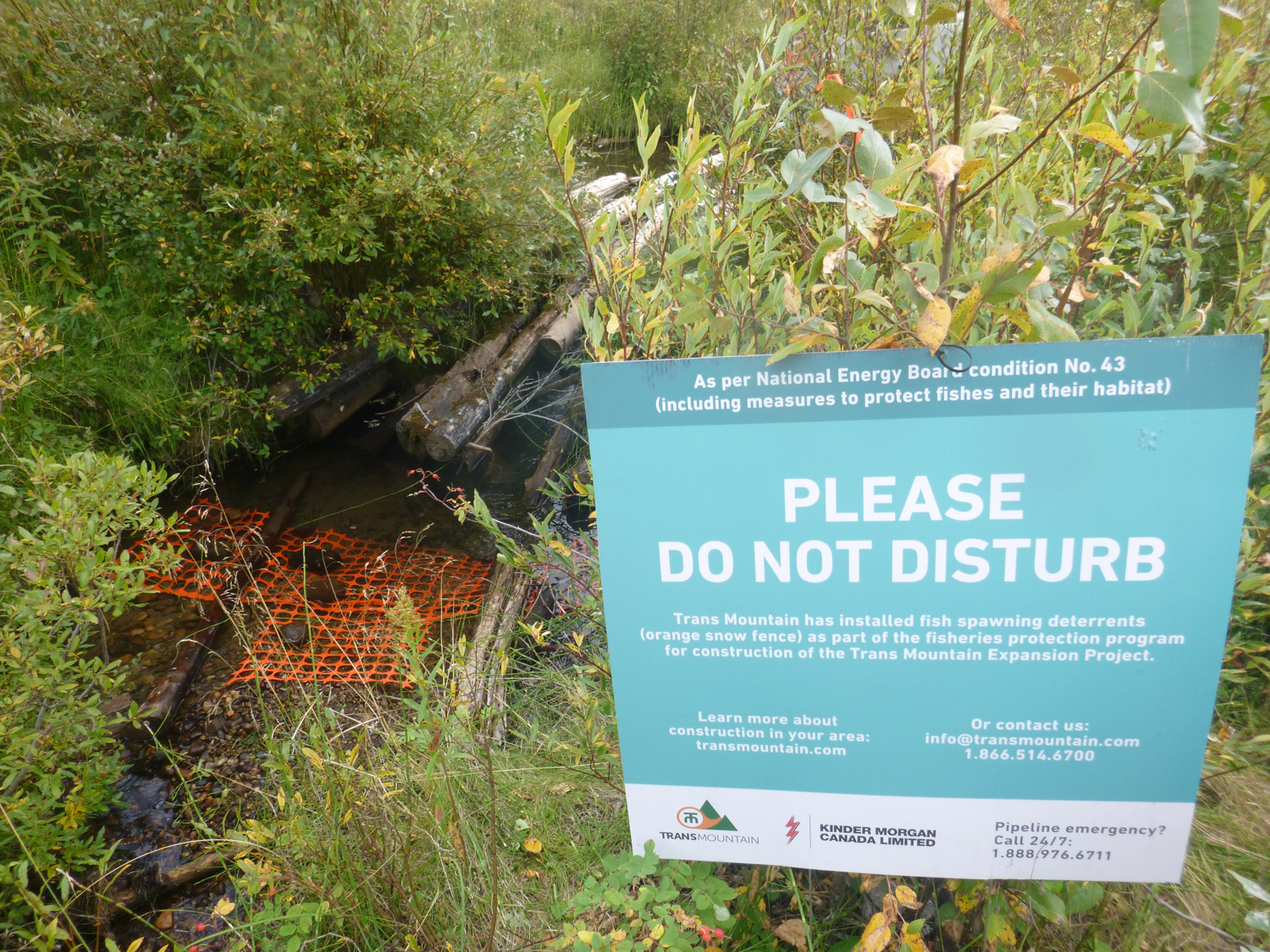
Chief Spahan said he plans to ask the NEB what they’re willing to do to protect steelhead if Trans Mountain moves forward.
“Are they willing to ignore that they’re on the brink of extinction, or are they going to put something in documentation saying that there needs to be something done to put Coldwater at ease that this stock of concern isn’t going to go extinct?”
The federal government has not yet made a final decision on whether to re-approve the Trans Mountain expansion, in response to the latest NEB recommendations.
In mid-March, Natural Resources Minister Amarjeet Sohi said consultation with more than 100 affected Indigenous groups is expected to wrap up before the end of May, meeting a deadline for the government to issue its decision within 90 days of the release of the Feb. 22, NEB report.
Trans Mountain is now owned by the federal government. Texas-based energy company Kinder Morgan sold the Trans Mountain system and the rights to the expansion project to the federal government at the end of the summer of 2018 for $4.5 billion. The company said that it no longer wanted to pursue the pipeline due to uncertainty about whether it could overcome regulatory obstacles and fierce public opposition, including from B.C.’s NDP government led by Premier John Horgan.
Steelhead’s rapid decline
The emergency assessment of the fish by COSEWIC (the independent committee of scientific experts) found an estimated 177 spawning-age steelhead in the Thompson River, representing a decline of 79 per cent in the last 10 years, or three generations of steelhead. It’s estimated that if steelhead decline in the Thompson River continues at the current pace, the population will become unsustainable in 15 years, reaching just 37 fish.
The situation is even more “dire” for Chilcotin River steelhead, the committee found. The independent committee’s 2018 survey observed just 58 mature fish, and the scientists estimated the population will reach just 11 fish in 10 years at the current rate of decline.
With the assessment, the scientists concluded that the steelhead are endangered and there is an “imminent threat to their survival.”
The committee also estimated that minimum mortality each year from bycatch in commercial salmon fisheries is 15 to 25 per cent. Taylor’s letter to McKenna noted that retention of steelhead trout is not allowed in the fisheries, but compliance with the regulation is poorly monitored, and even upon release, up to 25 per cent of the steelhead die.
According to COSEWIC, the reasons behind poor ocean survival are not fully understood, but warming ocean temperatures likely play a key role. COSEWIC reported similar poor ocean survival rates for salmon species.
In his letter, Taylor noted that breeding adults are increasingly spread thin throughout the Thompson and Chilcotin Rivers and their tributaries. One such tributary of the Thompson is the Nicola River, which is in turn connected to the Coldwater River.
Chief Spahan said his community is working with the Nicola Watershed Stewardship Fisheries Authority, part of the Nicola Tribal Association, on recovery strategies.
“We’re trying to secure more funding for our fish pond. We’ve done work on it already, we’re just looking for more funds to continue on to use our fish pond to raise steelhead there so we can try to build our numbers up.”
“But the longer we take, the more likely chance that those numbers aren’t going to rise and we’re going to lose those fish in that river,” Chief Spahan added.
Controversy over science advisory report
When determining whether or not to list a species under federal law, the environment minister takes into account assessments by the independent committee and, in the case of aquatic species, consults with the federal fisheries department (DFO). The minister also weighs the results of public consultation and the socioeconomic costs and benefits of listing the species, such as the impact a SARA listing could have on fisheries.
As part of these consultations, the DFO prepares a science advisory report for the species. The report for Thompson and Chilcotin steelhead, released in November 2018, was the subject of controversy in February.
The Vancouver Sun reported that B.C.’s Deputy Environment Minister Mark Zacharias wrote a letter alleging the report was no longer scientifically defensible, after the DFO unilaterally edited the original document, which was produced in a collaboration between federal and provincial scientists and reviewed by experts from academia, First Nations and conservation groups. According to the Sun, the changes mean weaker protection for steelhead from being caught up in commercial salmon fishing.
In an email to National Observer, a spokesperson of the Ministry of Environment and Climate Change Strategy in B.C. said, “The province continues to work with the Government of Canada to inform evidence-based decision making for the protection and recovery of species at risk ... Given the very low numbers and decreasing trends in numbers for both the Thompson and Chilcotin River steelhead populations, any harm will inhibit or delay potential recovery. Every possible effort should be made to minimize harm at this time.”
Fisheries and Oceans Canada did not respond directly to a question from National Observer about whether it reviewed how protecting the species under the species at risk legislation might impact the construction of the Trans Mountain expansion.
Wilkinson's office said that the department was responding to information requests from the National Energy Board as well as to questions from communities during the ongoing consultations.
Once a species is listed as threatened or endangered, it is illegal to kill, harm, harass or capture members of the species. Further, once the species’ critical habitat has been identified and recovery strategy and action plans are in place, the government has 180 days to ensure protection for that critical habitat.
However, according to Venton, the Species at Risk Act’s effectiveness is plagued by delay and a high level of ministerial discretion. Plus, there is no actual obligation to protect a species that the independent committee identifies as being at risk, until the minister agrees to list that species under the legislation.

Decision expected in April
For example, COSEWIC assessed the status of 24 distinct populations of sockeye salmon in November 2017 and recommended several be listed as endangered.
“No decisions have been made on any of those listing recommendations, and there are other aquatic examples that are even longer, like years longer. Our concern is that this nine-month timeline is being ignored or sidestepped, and that’s to the detriment of the species,” said Venton.
COSEWIC designated the Cultus Lake population of sockeye salmon as endangered in an emergency listing in 2002, but in 2005 the Canadian government decided not to list the salmon as endangered under SARA “due to the significant socio-economic impacts on sockeye fishers and coastal communities.”
“Virtually no other species of Pacific salmon have ever been listed,” Taylor said.
“Based on that precedent I would say that the chance of the steelhead getting listed is very low. If they did list, it would be immediately illegal to harm or harass them. They would have to stop the commercial fisheries.”
If Ottawa decides not to list steelhead trout as endangered under SARA, Taylor said their future protection falls into a “fog-like area” under existing fisheries legislation, which offers less accountability in terms of tracking protection and recovery efforts than SARA does.
In this case, Taylor said, “It would be an abrogation of responsibility to protect species at risk of extinction.”
Both Taylor and Spahan indicated they heard a decision could be expected in mid-April.
“It would be somewhat ironic if salmon which are struggling in no small measure because of climate change are then further imperilled through the construction and operation of a pipeline which itself will contribute to climate change,” Venton, the lawyer from Ecojustice, said.
Editor's note: This article was updated at 11:34 p.m. ET on April 1, 2019 with additional comments from the office of Federal Fisheries Minister Jonathan Wilkinson.
Uh-huh. A government in
Uh-huh. A government in Canada that actually puts the environment or endangered species before resource extraction would be turfed out of office so fast it would make your head spin. We may be warming faster than the rest of the planet but at least we're earning our extinction.
Justin's an oil and gas man
Justin's an oil and gas man now....with a carbon tax to massage his ego.
Yet another emergency
Editor's note: This comment has been removed for not meeting National Observer's editorial standards.
Are you merely spinning out
Are you merely spinning out of ConTroll, or are you, quite possibly, the dumbest Canadian?
I guess that’s one definition
I guess that’s one definition of dumb. Here’s another:
Dumb is assuming that since you don’t know yourself how to honestly compare Canada’s tax regime with other jurisdictions, no one else does. Dumb is pretending that if we dig up the tar but it’s burned somewhere else, it magically doesn’t count. Dumb is needing to be bribed not to cook yourself.
THE DITHERING MUST STOP !
THE DITHERING MUST STOP !
https://www.nationalobserver.com/2019/04/01/news/canada-considers-emerge...
Serve the export market, and our multibillion dollar visitor industries ,while at the same time create export infrastructure that increases capacity for export of our most valuable export commodities. Yes , build a refinery in BC to reduce the products price gouging by our current suppliers who ‘enjoy’ gouging their ‘locked in ‘ customers. The location of a refinery in KAMLOOPS as recently suggested by Mike Priario could, help BC reduce the threats to the shared Salish Sea.
Those refinery jobs would be welcomed in Kamloops…The Liberals promised infrastructure spending, well here’s a little ‘plumb’ that might help to offset the SNC Lavelin opera.
The second phase should be a new branch pipeline from Kamloops to Port Simpson BC where ,larger tankers could enter the open Pacific without threatening the Salish Sea environment .
Costs would increase but the increased revenue should help to offset cost of Kamloops to Port Simpson pipeline branch…
Since the beginning the environmental threats to the Salish Sea has been the major argument to cancel the TMX as proposed.
Carl Shalansky, P. Eng. (Retired)
Blog: https://redfern3359.wordpress.com/
(604) 986-4657
In spite of the dire warnings
In spite of the dire warnings of climate change, Justin Trudeau is carrying on with his fossil fuel ecocide strategies. As we have experienced with SNC-Lavalin he is willing to interfere with the Attorney General's independence to get his way and demonize any objectors. In the case of Alton Gas his government is prepared rewrite the law to allow them to dump salt brine water into a river which will endanger Indigenous fishing. Let's remember they subsidize fossil fuel companies to the tune of billions of dollars annually.
The Liberals and Conservatives are both prepared to implement "scorched earth" ecocide strategies to build the Trans-Mountain pipeline and expand the tarsands. Scorched earth meaning using militarized police to force the destruction of property, resources and wild life species. They will pursue victory or supremacy at all costs. They are prepared to be ruthless having no pity, merciless , cruel. These are quotes made in 2018 : "Federal Natural Resources Minister Jim Carr has indicated that the Trudeau government will not rule out using police or military force to quash resistance to the pipeline. Last month the Edmonton Journal reported former Bank of Canada Governor David Dodge said at an event in Edmonton that “we’re going to have some very unpleasant circumstances,” and that “there are some people that are going to die in protesting construction of this pipeline. We have to understand that." End quote. APTN
They have already shown they are willing to use militarized police against the Secwepemc and Wet'suwet'en Indigenous people and break the law to remove them from their unceded Traditional Territories. They are prepared to use police to inject fear, arrest, prosecute, fine and/or jail any citizen for protesting against their fossil fuel ecocide strategies. Sadly it appears as if the Provincial NDP is following them down that same road with their LNG fossil fuel development. Nothing seems to hold value except profits for fossil fuel companies bedamned the genocidal consequences for any of Mother Earth's species.

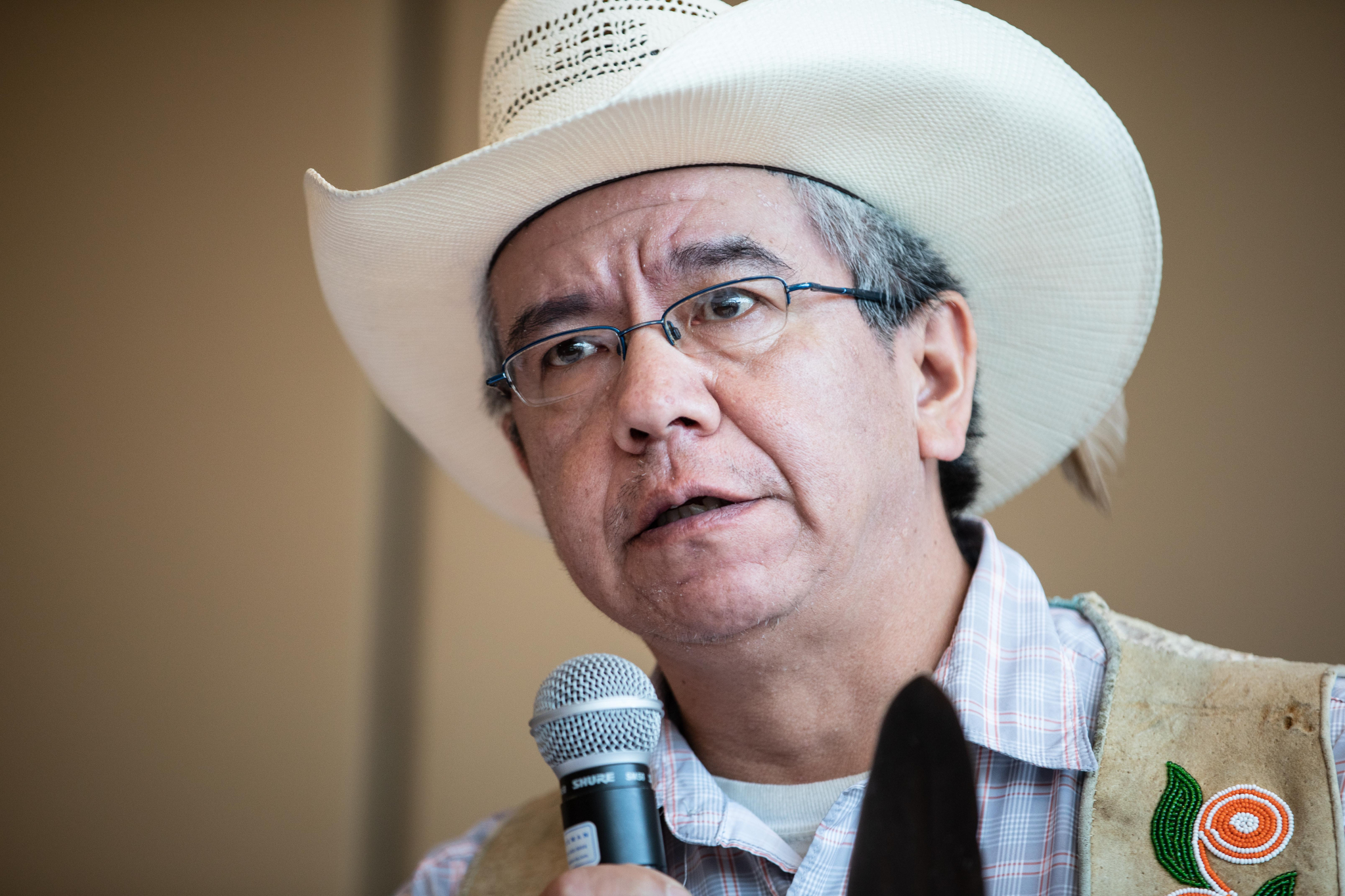


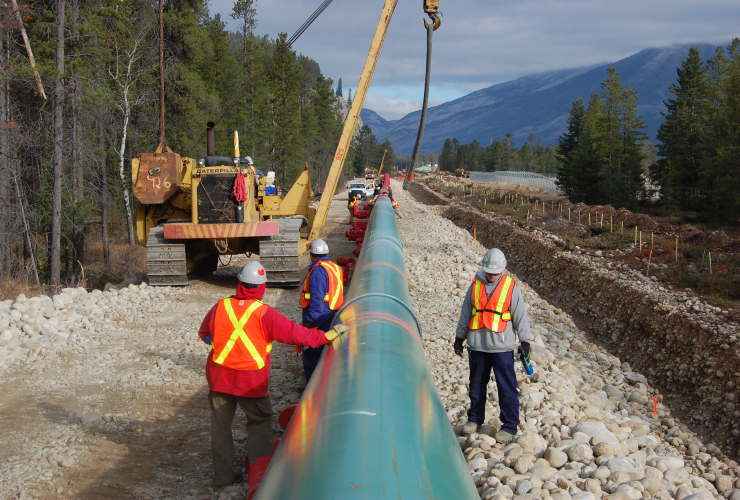

Comments